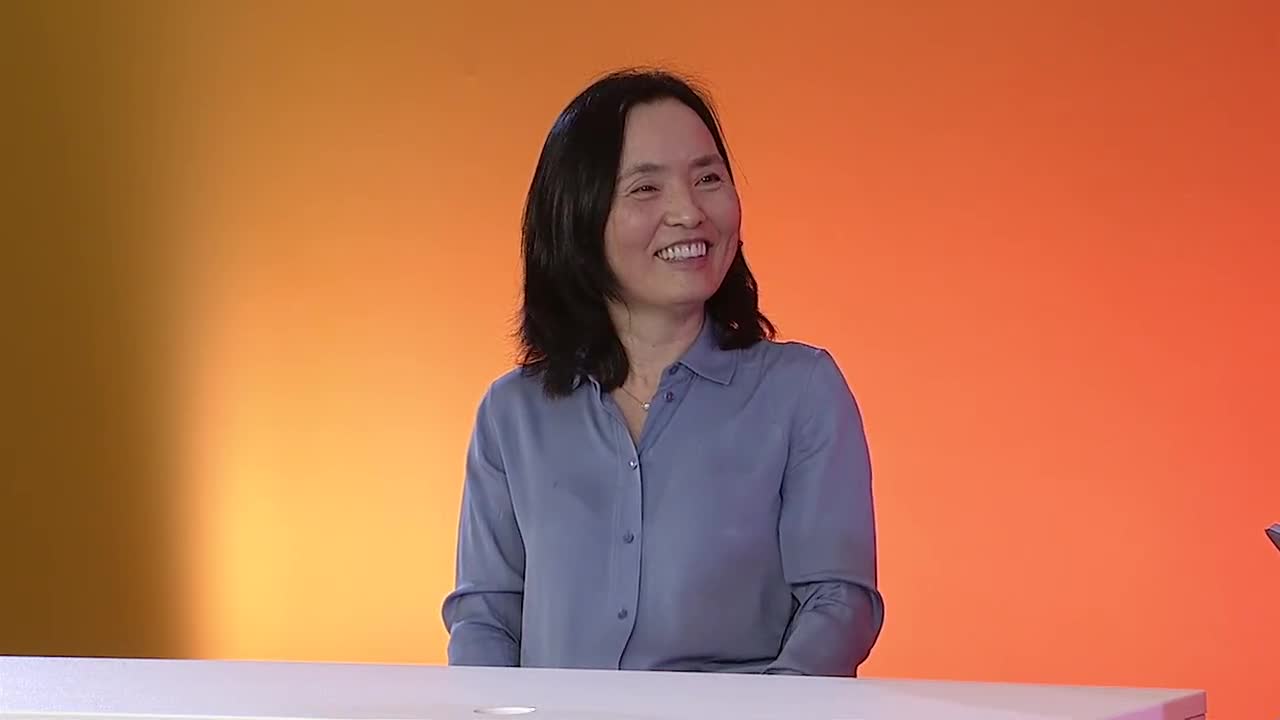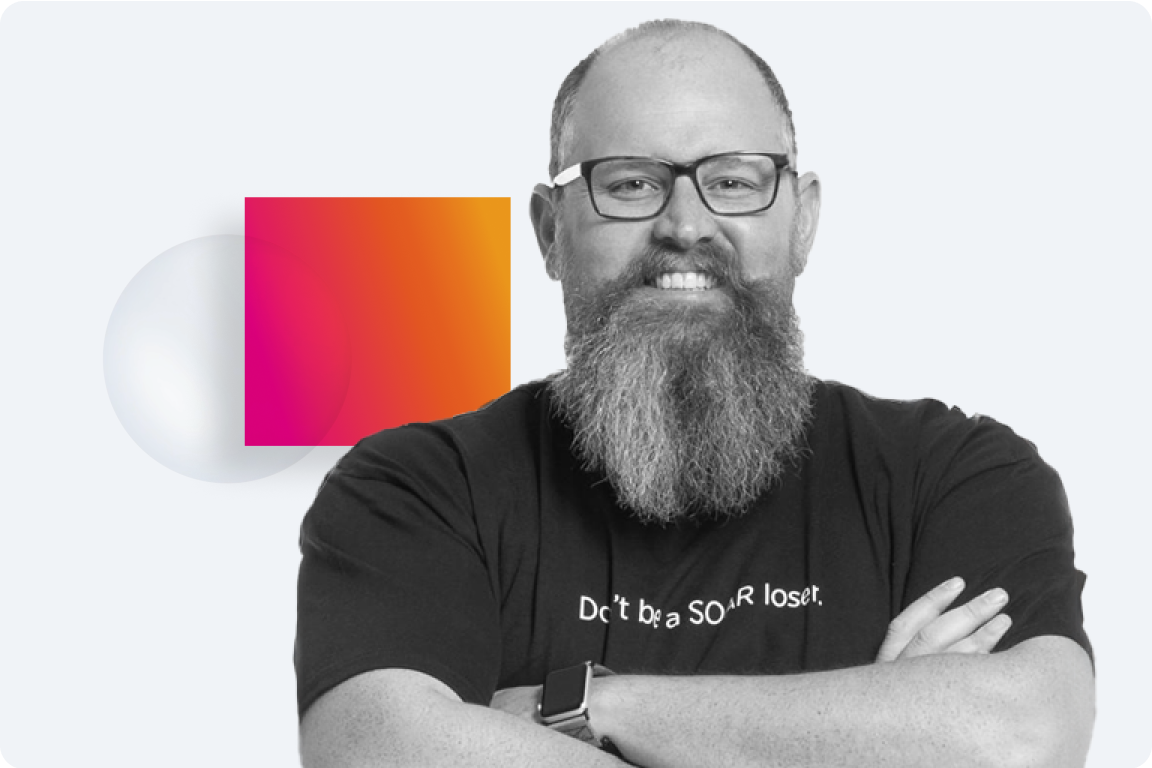Note: This is an auto-generated transcript, which may contain errors.
Cory Minton: Welcome to Perspectives podcast by Splunk where we get executive takes on topics covering cybersecurity and technology innovation by leaders and for leaders. My name is Cory Minton and I'm joined by Shaun Cooney, my co-host. And today we want to have a conversation that is all too common, it seems. in technology about things like innovation, emerging technologies. And we'd be remiss not to at least talk about AI and some of the crazy innovation happening in that space.
So we've invited Splunk's New CTO Min Wang to join us for conversation. Min, would you do us a favor and start by giving us a little bit about your journey, your history, kind of how you got to the, the seat you're in now of not only joining us here but CTO at Splunk.
Min Wang: My journey here has been fantastic during the 90 days. Super exciting. A lot of challenges. What got me there is one word: data. I started my career after I got my PhD in database in 99 and since 99 until now, 24, 25 last years, and I spent a good 20 years doing industry research in data, starting with IBM’s TD Watson Research Center working on IBM’s digital optimizer then enterprise data analytics for HP labs. Then joined Google when Google Research in 2013, when it was still in its early stage. So I left Google and joined the payment company, Visa, and started the research organization there. Did really exciting work, plus a year -long journey to build a deep learning model to really change the way the payment industry is dealing with fraud detection. Then I went back to Google and joined Google Cloud, and really made a big change in my career. I turned from the research side to product development. I led the development of a new product at Google Cloud for two years and then joined the Google Assistant, which is all about AI.
What brought me to Splunk is really the timing. When generative AI started in such a big way in the past year or so, I started to ask myself, technology in my mind is always a means to an end. When a new means like this one comes, what is the industry that can benefit from it the most in terms of the end, which for me is always delivering the best value to the customers.
Shaun: It's a really interesting career path. Thank you for sharing.
Min: Yeah, I want to make a note is for those people who may listen to this if you started your career after you got your PhD in computer science, in industry research organization, like in the past IBM Labs Research, Microsoft Research and so on, five years is usually the point that people saying, ‘Hey, am I going to change to the other side of the industry, being development and product?’ And if you don't do that at that point, you stay in research forever. And I'm a really odd layer because when I made the change in 2018, I left Visa and I told Google that the only reason I come back is I'm going to do product development. Yeah, but I'm so glad I did that because I feel so much closer to the real value delivery part of the chain.
Shaun: So a real outlier. No pun intended. So let's talk a little bit about AI then we're here today. It is obviously one of the buzzwords that we're hearing a lot at the moment. We've probably entered the next wave, the summer of AI as it were. Probably in large part thanks to open AI and ChatGPT. But what are you most interested in? What are you most excited about over the next year or so when it comes to AI developments?
Min: Yeah, you are not going to like my answer, at least the first part. Well, I have been talking about AI on the keynote all the way, I want to make a clear point here. Remember, in my mind at least, innovation and any new technology is always a means to an end and the end is customer value. But to be concrete, bring value to the customer, solve their most important problems in the best, most effective way. And you’ve got to start from there and then look for the proper technology. So define your problem and the expected outcome first, then go through the chains of options of technology and the generative AI as other technology is just one of your options. Depending on what outcome you expected and what problem you are facing, generative AI could as well be the best one or could not be suitable. Don't forget all the other technologies we have all built over years: traditional machine learning, statistics, database, right? Some problems can still be best solved by them. Generative AI is super powerful, bringing the powers from dimensions that were never imagined before. But it is still new to translate this technology to real value and solution, there’s a long way to go. And for me, leading this journey at Splunk is what excites me the most.
Cory: Absolutely. So that's one of the things that we look at, you know, public statements of some of the largest organizations around the world. And there's this unifying kind of thread that we see, which is, you know, chairman and CEOs talk a lot about cybersecurity is a must, but innovation is also a must. So how do leaders like you and how do you hear other leaders trying to balance that requirement of ‘Hey, we absolutely need to innovate.’ There's pressure from outside forces because generative AI is this talk, but how do you balance that need for innovation with that need to build things that are resilient and secure?
Min: It's all come down to some basic principles. I think we need to be super clear about your business goal first. Super clear about your business goal and don't leave ambiguity. That doesn't mean you cannot change. Make it clear when you need to change it, but before any change, you need to be super clear with your team about your business goal. And then based on the goal, start to build innovation and the technology roadmap and strategy to achieve this goal. And, then the next important thing is really how you measure your progress, right? So this is actually one of my favorite topics. If you want to be successful, you first need to have a clear goal. Second, you need to have a road map in a way that you can measure your progress. For generative AI in particular, I actually talked to a few colleagues yesterday. I started to think about how I am going to measure the progress of generative AI technology in Splunk. So here are some very early thoughts, like really early – 0.1 I will call it. We need to define our success management around two places. One is several key user journeys. And second, there are certain fundamental common components for using generative AI. This is hard, we are going to start something and keep iterating. It depends on what we hear from our customers in particular from the field. And then for each of those components and the user journey – especially when it comes to the user journey – I want to focus on several dimensions to measure if we are making progress. One is to really help our customers in this particular journey, doing things faster, easier, smarter and simpler. Easier and simpler have some overlap. I haven't defined the specific definition yet, but then translate this whole concept into some early metrics. Start to quickly see if we are making any progress, right? And the one thing I'll always call out is that I didn't say cheaper. Did you notice that? Cheaper was in my initial draft, I wrote down on my notepad. But I deleted it, because I don't think cheaper is a well-defined term in this scenario because expensive or cheap is all relative to the value. And I would rather focus on the value generation and then let my other colleagues figure out the pricing.
Shaun: That's really interesting, isn't it? Let's think about the average organization going through or thinking about their own AI journey over the next however many years. Who should lead the change in AI because a lot of organizations may jump at the chance of maybe thinking this is just another IT project, right? And maybe it's the responsibility of the IT director or the CTO or the COO. Whose responsibility should it be?
Min: I think it is the whole organization and I also want to add: the first step for a lot of organizations is going to be to get some technical fundamental understanding about generative AI before you talk about anything. Actually, I'm going to push that we do it at Splunk.
Cory: That's fantastic. So one of the things you just mentioned is you have to have everyone on the same page, everybody has to work together to achieve the innovation. But as a senior leader in an organization, you ultimately have to answer to a board of directors and a board of directors needs to be in your camp as an executive, they need to be aware of and aligned to your vision. What are some best practices that other CTOs might benefit from on how you clearly articulate and get the board of directors in your camp, so to say, and supportive of your vision?
Min: Yeah, I think it depends on your board members’ backgrounds, but in most cases, I would start with an informal conversation to get everybody on the same page from the technical understanding level about the generative AI, what it is about. So many people talk about generative AI but the fundamentals need to be better understood for us to have a meaningful conversation when we talk about the generative AI strategy. The second is really using examples to illustrate your vision. Keep talking about the principles and concepts, right? I think that usually works for me the best, starting with simple examples and how this example is assuming it's a user journey, why is it not solved today? And then what is the ideal outcome if you have the technology to really bring it to the next level in a better way and then list all the technology options that can bring you there and tell them which one it is the best one for each component and the why, right? And then the next step is to really show experimental results to, to really validate what you said is not just a feeling. Yeah. And yes examples are always working for me – the best keep me honest.
Shaun: Explaining it, metaphors and so on. Yeah, great. Thank you. So we've spoken about AI, but I'm sure there are other disruptive technologies that you're thinking about beyond AI. Would you mind sharing a few of them?
Min: I wouldn't call it disruptive, but I really think one interesting problem for all of us to look into is how we can seamlessly kind of integrate the traditional machine learning technique with generative AI so we can get the good side of both. We all know generative AI has a translation problem. There is a big revolution and technology trend on how we build the large language model. Hallucination is not going to be solved. While it will always be there, all we can do is to reduce it. But on the other side, the more you reduce it, generative AI’s special power becomes weaker. So it's like hallucination is being creative, right? I do feel by leveraging what we have built in traditional machine learning, there may be a way we can do it better.
The second one I'm thinking about is how we better do domain-specific generative AI models, not only for quality but also for cost. Now I'm talking about cost. We're not building models to solve the world in all the languages, right? So we want to solve all the problems a Splunk customer can remediate in their environment or workflow – that is a much smaller specific domain. So how do we fine-tune the model to be domain and Splunk-specific and also getting smaller?
Cory: Well, Min, it's been fantastic to have you join us on perspectives. And I candidly, I think that having a CTO that has a vision for how the technology will evolve. The customer journey is fantastic, but also thank you for the guidance on how do you really act as a great leader in a technology organization to drive innovation and help your customers get the most value? So it's been a fantastic conversation.
Thank you all for joining us on this podcast and hopefully you'll be tuning in to Splunk.com/perspectives for more conversations and takes from the executive team on topics around cybersecurity and technology for leaders and by leaders. I'm Cory Minton. Thanks so much for joining us.






